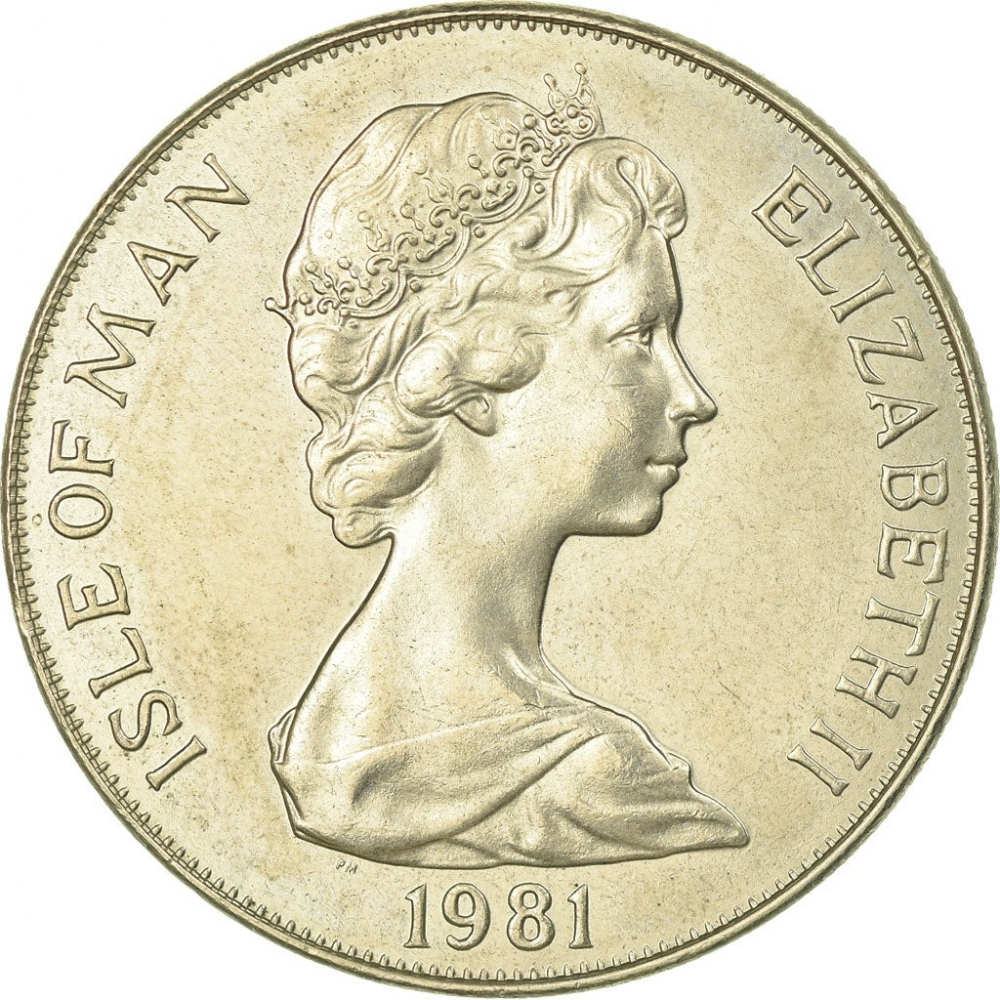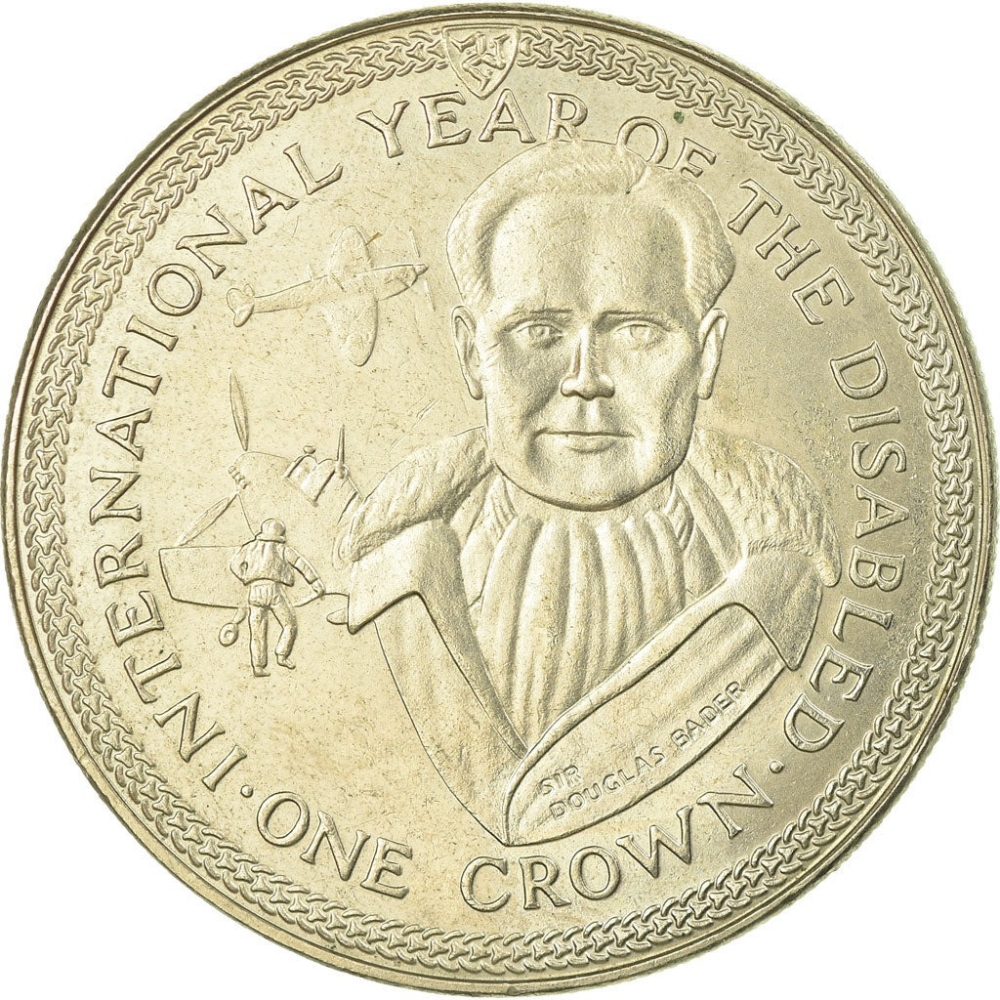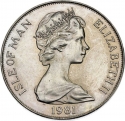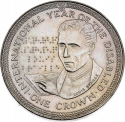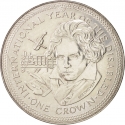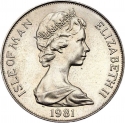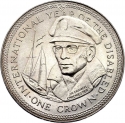You are about to finish your registration. Please check your mailbox (including spam folder). There should be a letter with a confirmation link. Check setting to make sure that your e-mail address is correct.
Send letter againDescription
The year 1981 was proclaimed the International Year of Disabled Persons (IYDP) by the United Nations. It called for a plan of action with an emphasis on equalization of opportunities, rehabilitation and prevention of disabilities. The slogan of IYDP was "a wheelchair in every home", defined as the right of persons with disabilities to take part fully in the life and development of their societies, enjoy living conditions equal to those of other citizens, and have an equal share in improved conditions resulting from socio-economic development.
Obverse

|
Depicts the second crowned portrait of HM Queen Elizabeth II facing right, wearing the Girls of Great Britain and Ireland tiara, surrounded by the inscription, the mintmark (PM) and the date below. ISLE OF MAN ELIZABETH II |
|---|---|
Reverse

|
Depicts a bust of Douglas Bader, two fighter aircrafts and a pilot. INTERNATIONAL YEAR OF THE DISABLED |
| Edge |
1 Crown
2nd portrait
International Year of Disabled Persons
Douglas Bader
Subscribe series
KM# 79
International Year of Disabled Persons
Douglas Bader
Characteristics
| Type | Commemorative Issue (Non-circulating) |
| Material | Cupronickel |
| Weight | 28.28 g |
| Diameter | 38.61 mm |
| Thickness | 3.17 mm |
| Shape |
|
| Alignment | Medal |
| Mint |
Pobjoy Mint (PM)
|
Related coins
International Year of Disabled Persons
International Year of Disabled Persons
